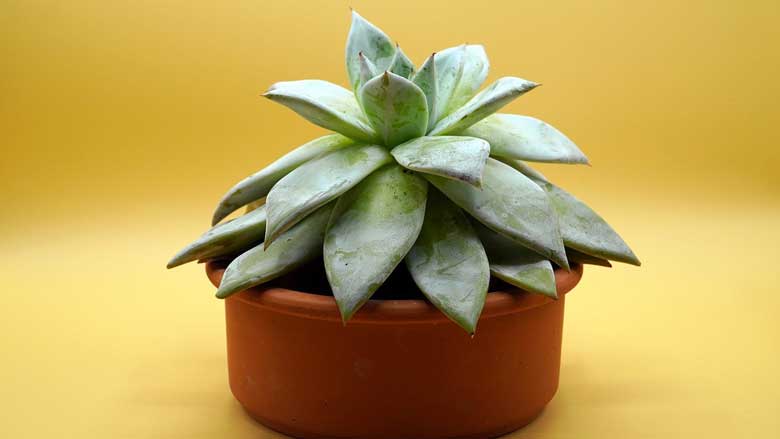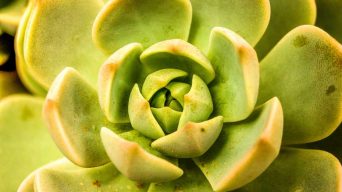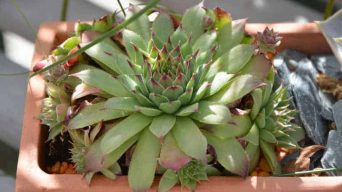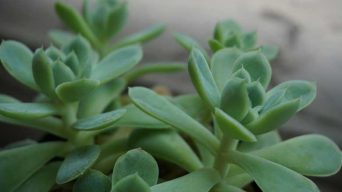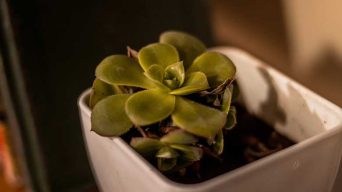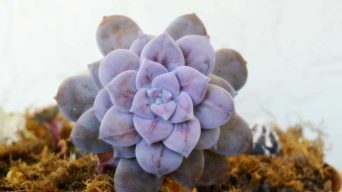You’re not alone if you’ve noticed your succulent looks droopy lately.
Many succulent owners find themselves asking why is my succulent droopy.
This is a common problem with these plants and has several causes.
In this article, we’ll discuss the nine most common reasons why succulent leaves droop, as well as how to fix a droopy succulent.
Why Your Succulent Plant Has Droopy Leaves: Key Reasons
When succulent leaves droop, it’s usually a sign that something is wrong with the plant.
There are several reasons why succulents might droop, including water issues, light problems, and temperature changes.
The problem can be fixed by addressing the underlying problem in most cases.
Below, we’ll discuss the nine most common reasons succulent’s leaves droop and how to fix each problem.
1. Overwatering
Excessive watering is a prevalent cause for succulent to become droopy, specially on the lower leaves.
Succulents are drought-tolerant plants, so they don’t need a lot of water. If you give them too much water, their roots will rot, and the plants will die.
Succulents need to be watered only when the soil is dry to the touch. If you’re unsure if your plant needs water, wait until the top inch of soil is dry before watering again.
They usually need water only once a week, but this varies depending on the size of the pot, the type of succulent, and the climate.
Besides leaf drooping, other common signs of excessive watering in a succulent include:
- Wilting
- Brown spots on the leaves
- Root rot
How to Fix It
If your succulent is overwatered, the first thing you need to do is water it less often. Cut back on watering by half and see if that fixes the problem.
If the plant is in a pot, ensure the pot has drainage holes so the water can escape. This will help excess water escape so the roots don’t rot.
Also, use proper potting soil for succulents. Regular potting soil will hold too much water and lead to root rot. A cactus potting soil or succulent potting mix is a good option.
If you’ve been overwatering your succulent for a while, there’s a good chance the roots have already rotted.
In that case, you must repot the succulent with fresh soil. Be sure to get rid of all the old soil and water the succulent very sparingly until it recovers.
2. Too Little Water
Insufficient watering is a frequent cause of droopy succulent leaves when they don’t receive enough water.
Although succulents need less water than other plants, they still need some water to stay healthy.
If your plant isn’t getting enough water, the leaves will droop to conserve water.
Succulents usually need water about once a week, but this will vary depending on the climate and other factors.
Other common signs of a succulent suffering from insufficient watering include:
- Wilting
- Brown or crispy leaves
- Shriveled leaves
- Dry soil
- Slow growth
How to Fix It
If you think your succulent isn’t getting enough water, the first thing to do is check the soil.
If the soil is dry, give your plant a good watering.
Ensure the plant is watered until the water starts flowing out of the drainage hole at the bottom of the pot.
You can also test whether your plant needs water by sticking your finger in the soil.
If the soil is dry up to your first knuckle, it’s time to water your plants.
If the soil is wetter than that, you can wait a few more days before watering.
Once you’ve established how often you should water your succulent, water it at that frequency.
3. Too Much Sun or Heat
Another common reason why leaves droop is too much sun or heat.
Succulents need a lot of sunlight but can’t handle direct sunlight for too long.
If your plant is in direct sunlight for too long, the leaves will droop to protect themselves from the heat.
In addition to leaf drooping, plants in too much sun or heat can also:
- Sunburned succulent leaves
- White or pale patches on leaves
- Browning or scorching of the leaves
How to Fix It
If you think your succulent is in too much sun, the first thing to do is move it to a shadier spot.
Succulents thrive in bright indirect sunlight, so try to find a spot in the shade but still get some light.
Succulent plants need at least four hours of direct sunlight daily.
If you can’t move your plant to a shadier spot, use a shade cloth to protect it from the sun.
Place indoor succulents in an east- or west-facing window when growing them.
This will give them morning or afternoon sun, and they will be in the shade during the hottest part of the day.
When cultivating succulents outdoors, choose a location that receives either morning or afternoon sunlight, as succulents cannot endure extended periods of direct sunlight.
If your succulent is in too much heat, try to move it to a cooler spot.
Succulents don’t do well in extreme temperatures, so make sure the temperature is comfortable.
If you can’t move your plant to a cooler spot, use a fan to cool it down.
4. Too Little Sunlight
Another common reason why succulent leaves droop is too little sunlight.
Succulents need a lot of sunlight but can’t handle direct sunlight for too long.
The leaves will droop to conserve energy if your succulent isn’t getting enough light.
Common signs of too little sun are:
- The stem of the succulent is stretched out and thin
- The leaves are pale or yellowish
- The succulent is not growing
How to Fix It
If you think your succulent isn’t getting enough sunlight, the first thing to do is move it to a sunnier spot.
Succulents thrive in bright indirect sunlight, so try to find a spot that’s in the sun but still gets some shade.
Succulent plants need at least four hours of direct sunlight daily, so place them where they will get plenty of sunlight.
If you can’t move your plant to a sunnier spot, try using a grow light to give it some extra light.
Another option is to move your succulent outdoors during the summer when it will get more sunlight.
Succulents can’t tolerate direct sunlight for long periods, so make sure to provide them with plenty of indirect sunlight.
5. Temperature Fluctuations
Succulents are sensitive to changes in temperature and can droop or wilt as a result.
If you’ve recently moved your succulent from one room to another, or if the temperature in your home has been fluctuating a lot, this is likely why your plant leaves are droopy.
Succulents need a consistent temperature of around 65-75 degrees Fahrenheit to stay healthy.
Your plant will show signs of stress if the temperature is too high or too low.
Other factors that can affect the temperature and cause plants to droop include drafts, direct sunlight, and being near a heat source.
How to Fix It
If your succulent is droopy due to fluctuations in temperature, try moving it to a location where the temperature is more consistent.
If possible, try to avoid exposing your succulent plant to extreme temperatures.
If you live in a climate where the temperature can drop below 65 degrees Fahrenheit, it might be necessary to move your succulent plants indoors during the cold winter months.
If you live in a climate where the temperature can get above 75 degrees Fahrenheit, try to find a location in your home that provides shade. This will help keep your plant temperature more consistent.
If you’re having trouble keeping the temperature in your home consistent, you may want to consider investing in a thermostat that can be programmed to maintain a set temperature.
6. Root Rot
Root rot is a common problem that can cause leaves to droop.
The roots of a succulent can become infected with fungus or bacteria, which will cause the plant to wilt and die.
Other symptoms of root rot include:
- Black or brown roots
- A foul odor coming from the plant
- Leaves that are soft and mushy
How to Treat Root Rot on Succulent Plants
If you think your succulent may have root rot, the best thing to do is remove the plant from its pot and inspect the roots.
If the roots are black or brown or smell foul, the plant has root rot and must be treated.
Remove all the soil from the roots and cut away any infected parts of the root. You might also find it necessary to transplant your succulent into a new pot using fresh soil.
Be sure to keep your plant in a location with plenty of sunlight.
Root rot can be caused by overwatering, so ensure you’re not watering your plants too often.
Only water succulents when the soil is dry.
If you’re having trouble treating root rot, you may want to consider using a fungicide, such as hydrogen peroxide to treat the infection.
Mix one part 3% hydrogen peroxide with two parts. Water should be mixed carefully in a watering can or spray bottle and poured over the plant’s root system.
7. Over-fertilizing succulents
Succulent plants are sensitive to over-fertilizing and can start to droop. Succulents need very little fertilizer and can be over-fertilized very easily.
When you fertilize your plant, you give it the nutrients it needs to grow.
If you give your plant too much fertilizer, it will absorb the excess nutrients and eventually start to droop.
Other common signs of over-fertilizing include:
- Yellow leaves
- Slow growth
- Lose of dead leaves
How to Fix It
If you think your succulent has been over-fertilized, the best thing to do is stop fertilizing it altogether.
Let the soil dry out completely before watering it again. You may also want to repot your succulents in fresh soil.
Be sure only to fertilize your plant when it is actively growing.
Succulents typically go through a growth spurt in the spring and summer, so this is the best time to fertilize them.
If you’re having trouble knowing how much fertilizer to give your plant, try using a diluted solution of liquid fertilizer at half the recommended strength.
8. Insects or Pests
Insects or pests can also be a common cause of droopy leaves.
Insects like aphids, mealybugs, and spider mites can attach themselves to the plant leaves and suck the sap out of the plant.
This will cause the leaves to wilt and droop. Getting rid of any pests on your succulent as soon as possible is essential to prevent further damage.
Other signs of an infestation include:
- Swarms of insects around the plant
- Sticky honeydew on the leaves and stems
- Mites or webbing on the leaves
How to Fix It
If you think your succulent has been infested with pests, the best thing to do is remove the plant from its pot and inspect it closely.
If you see any insects or pests, use an organic insecticide to eliminate them.
You can also try washing the plant leaves with a strong stream of water to wash away any pests or honeydew.
Be sure to keep your plant in a location with plenty of sunlight. Sunlight will help kill any insects or pests on the plant.
If you’re having trouble getting rid of the pests, you may want to consider using a horticultural oil or soap.
You can also use one part dish soap to ten parts water, which should be mixed in a spray bottle and sprayed on the leaves.
Avoid getting the soap in the plant’s soil, as it will kill the plant.
9. Transplant Shock
Transplant shock is another common reason why succulent leaves droop.
When you transplant a succulent, you move it from one pot to another.
This can be a traumatic experience for the succulent and cause the leaves to droop or wilt.
Transplanting a succulent can also cause the roots to rot.
When you transplant a succulent, the roots may not get enough oxygen in the new soil and will start to rot.
How to Fix It
If you think your succulent is in transplant shock, the best thing to do is give it some time. The succulent will eventually start to recover and will resume growing normally.
After repotting a succulent, don’t water it for at least a week. This will allow the succulent’s roots to re-establish themselves in the new pot.
Be sure to use well-draining soil when repotting your succulents. A succulent’s roots need plenty of air to grow and will rot if they’re constantly wet.
If you see any signs of the succulent’s roots rotting, stop watering it immediately and wait for the roots to heal.
You may also want to repot the succulent in fresh soil.
Make sure to transplant your plant only during its growing season. Succulents typically go through a growth spurt in the spring and summer, so this is the best time to transplant them.
Final Thoughts on Succulent Leaf Drooping
Succulents are hardy plants that can thrive with little care and attention.
There is probably a specific reason if you are experiencing problems with your succulents, such as leaf drooping.
By troubleshooting the issue, you can usually get your plant back on track in no time.
Remember to be patient and take things slow. Recovering a drooping succulent can take a little time.

